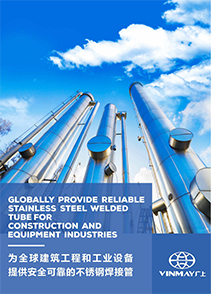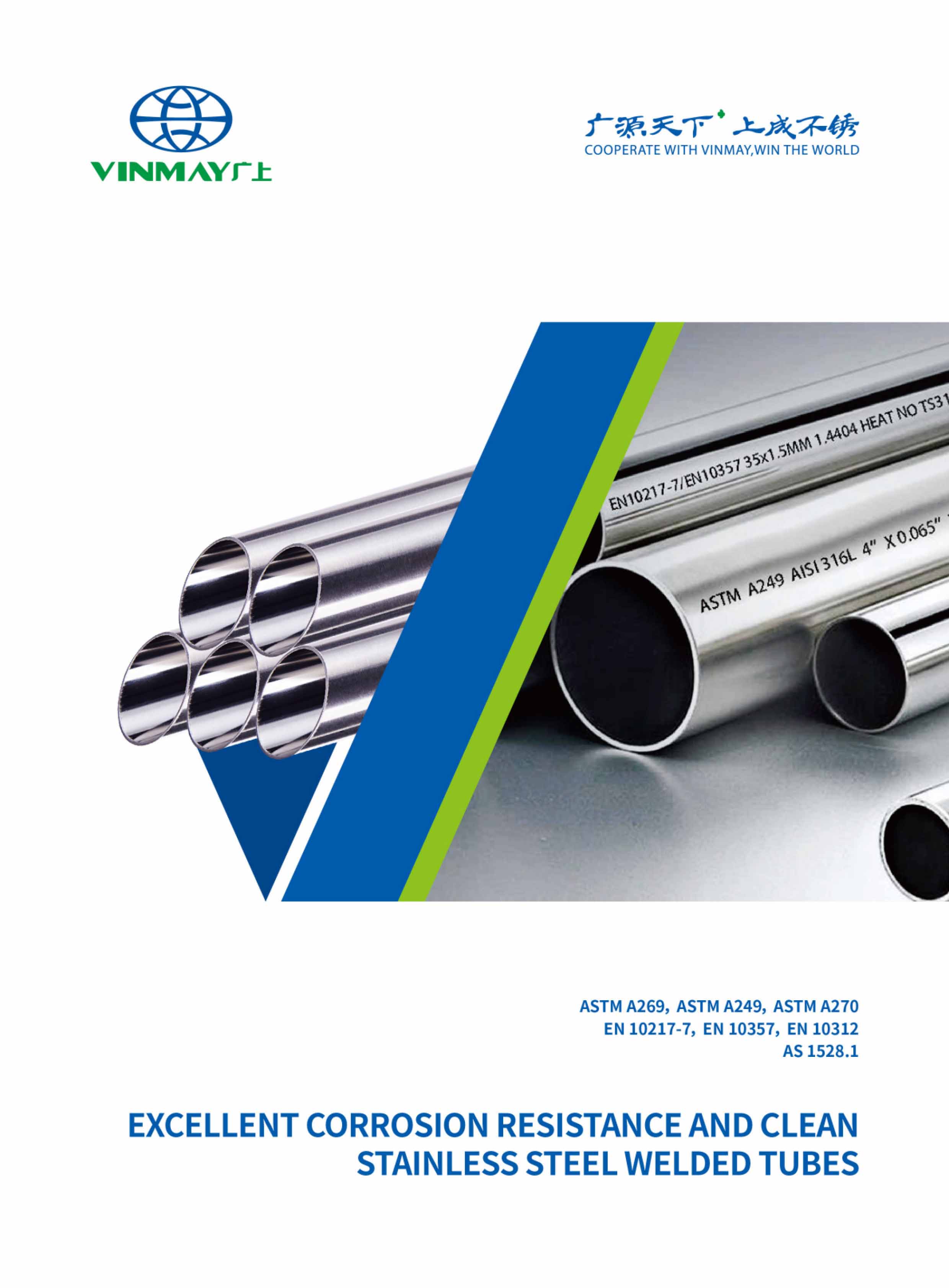When it comes to working with stainless steel square tubes, having accurate weight calculations is crucial for a variety of applications. Whether you are designing structures, planning transportation, or estimating costs, understanding how to calculate the weight of stainless steel square tubes is essential. In this ultimate guide, we will take you through a step-by-step process, starting with understanding the dimensions and density of stainless steel, all the way to practical examples and tips for accurate weight calculations. By the end, you'll have the knowledge and tools to confidently tackle any stainless steel square tube weight calculation challenge. So, let's dive in and explore the world of stainless steel square tube weight calculations together.

Calculating the weight of stainless steel square tubes is crucial in various industries and applications due to its impact on structural integrity, load-bearing capacity, transportation logistics, and cost considerations. Accurate weight calculations allow engineers and manufacturers to assess the suitability of stainless steel square tubes for different projects and ensure compliance with safety regulations.
The weight of stainless steel square tubes directly affects their structural integrity. Knowing the weight helps engineers determine the appropriate size and thickness of the tubes required to support the intended loads. This is especially important in industries such as construction, where the tubes are often used as load-bearing elements in buildings and infrastructure.
Transportation logistics also rely on accurate weight calculations. Knowing the weight of stainless steel square tubes is crucial for planning the transportation process, including selecting the appropriate vehicles and ensuring compliance with weight restrictions set by regulatory authorities. Overloading can lead to accidents, damage to infrastructure, and legal consequences.
Additionally, calculating the weight of stainless steel square tubes is essential for cost considerations. Accurate weight estimates enable manufacturers and project managers to determine the amount of materials needed, which directly impacts the overall cost of a project. It helps in estimating raw material costs, labor requirements, and transportation expenses, allowing for more accurate budgeting and cost control.
Recommended: Cost of Stainless Steel Square Tubing
Stainless steel square tubes are characterized by their specific dimensions, which play a crucial role in determining their suitability for various applications and industries. Understanding the dimensions of stainless steel square tubes is essential for engineers, architects, and manufacturers who desire control over their projects. Here are three key aspects to consider:
Understanding the dimensions of stainless steel square tubes is crucial in determining their suitability for various applications and industries; therefore, to further analyze their characteristics, it is necessary to determine the density of stainless steel.
Density is a fundamental property of any material and refers to its mass per unit volume. In the case of stainless steel, density is an important factor in estimating its weight and overall strength. The density of stainless steel can vary depending on the specific alloy composition and the manufacturing process used.
To determine the density of stainless steel, one must consider the alloy's chemical composition. Stainless steel is primarily composed of iron, with the addition of varying amounts of chromium, nickel, and other elements. These alloying elements contribute to the material's corrosion resistance, strength, and other desirable properties.
The density of stainless steel typically ranges from 7.85 to 8.05 grams per cubic centimeter (g/cm³). However, the density can be affected by the specific grade and form of stainless steel being used. For example, austenitic stainless steels, such as the widely used 304 and 316 grades, tend to have a slightly lower density compared to ferritic or martensitic stainless steels.
Accurately determining the density of stainless steel is essential for various engineering calculations and material selection processes. It allows engineers and designers to accurately estimate the weight of stainless steel square tubes, as well as understand their mechanical properties and structural integrity.
Recommended: 304 Stainless Steel Square Tubing
To calculate the cross-sectional area of a square tube, we need to use a specific formula. The formula for calculating the area of a square is side length squared. In the case of a square tube, we measure the dimensions of the inner square and subtract the dimensions of the outer square to determine the side length for the formula. By accurately measuring the tube dimensions and applying the area calculation formula, we can determine the cross-sectional area of a square tube.
The calculation of the cross-sectional area of a square tube requires the application of a precise formula that takes into account the dimensions of the tube. To accurately determine the area, follow these steps:
For example, if the width of the square tube is 2 inches and the height is 3 inches, the area of one side would be 6 square inches. Multiplying this by 4 gives a total cross-sectional area of 24 square inches.
What is the process for accurately measuring the dimensions of a square tube to calculate its cross-sectional area? Measuring the dimensions of a square tube involves determining its height and width. To measure the height, place a ruler or measuring tape on one side of the square tube and measure the distance from the bottom edge to the top edge. Repeat this process on the opposite side of the tube to ensure accuracy. To measure the width, place the ruler or measuring tape on one side of the tube and measure the distance from one edge to the other. Again, repeat this process on the opposite side for accuracy. Once the height and width are obtained, the cross-sectional area can be calculated by multiplying the height by the width.
Using mathematical calculations and precise measurements, the volume of a stainless steel square tube can be accurately estimated. Estimating the volume of a stainless steel square tube is a crucial step in determining its weight and overall dimensions. Here are three key factors to consider when estimating the volume of a stainless steel square tube:
Once these measurements are obtained, the volume of the stainless steel square tube can be calculated using the formula: volume = length × width × height. By plugging in the measured values, you can accurately estimate the volume of the stainless steel square tube.
Accurately estimating the volume of a stainless steel square tube is essential for various applications, including determining the weight, material requirements, and structural integrity of the tube. Precise measurements and mathematical calculations ensure a reliable estimation process that enables engineers and manufacturers to have full control over their projects.
To accurately calculate the weight of a stainless steel square tube, it is essential to convert the volume to weight using the density factor. Density is the measure of mass per unit volume, and it represents the compactness of a material. By knowing the density of stainless steel, one can determine the weight of a given volume of square tube accurately.
The relationship between density and mass is a fundamental concept in physics and engineering, allowing for the conversion of volume to weight through the use of the density factor. Understanding this relationship is crucial when calculating the weight of stainless steel square tubes. Here are three important points to consider:
Accurate weight calculations for stainless steel square tubes can be achieved by converting volume to weight using the density factor. The density factor is the ratio of the density of the material to the density of water. By multiplying the volume of the square tube by the density factor, the weight of the tube can be determined with precision.
To illustrate this process, consider the following example:
| Material | Density (g/cm³) |
|---|---|
| Stainless Steel | 7.93 |
| Water | 1 |
Let's say we have a stainless steel square tube with a volume of 100 cm³. To calculate its weight, we multiply the volume by the density factor:
Weight = Volume x Density Factor
Weight = 100 cm³ x 7.93 g/cm³
Weight = 793 g
When calculating the weight of different square tube sizes, it is important to employ a precise and analytical approach. By following the correct formulas and using accurate measurements, you can ensure that your calculations are as precise as possible. To help you understand the process better, here are some practical examples of calculating the weight for different square tube sizes:
To ensure precise and analytical stainless steel square tube weight calculations, it is advisable to utilize appropriate tools and techniques. These tools not only simplify the calculation process but also ensure accuracy and efficiency. One of the most commonly used tools is a digital scale, which provides an accurate measurement of the square tube's weight. Additionally, a digital caliper can be used to measure the dimensions of the tube, such as its length, width, and thickness, which are crucial for accurate weight calculations.
Another useful tool is a weight calculator specifically designed for stainless steel square tubes. This calculator takes into account the dimensions of the tube and the density of stainless steel to provide an accurate weight estimation. It eliminates the need for manual calculations and reduces the chances of errors.
To engage the audience and provide them with a visual representation of the calculations, a table can be incorporated. The table below demonstrates the weight of stainless steel square tubes of different dimensions:
| Tube Dimensions (inches) | Weight (lbs/ft) |
|---|---|
| 1x1x0.065 | 0.613 |
| 1.5x1.5x0.083 | 1.021 |
| 2x2x0.120 | 2.356 |
| 3x3x0.188 | 5.654 |
To determine the weight of a stainless steel square tube without knowing its dimensions, one must first obtain the necessary measurements such as length, width, and thickness. These measurements can then be used in the appropriate formula to calculate the weight of the tube.
Yes, there can be a difference in weight between stainless steel square tubes of the same dimensions but made from different grades of stainless steel. The weight variation is due to the varying chemical compositions and densities of the different grades.
Yes, the same formula can be used to calculate the weight of rectangular stainless steel tubes as well. The formula takes into account the dimensions and density of the stainless steel material.
Yes, there are several online calculators and software available that can accurately calculate the weight of stainless steel square tubes. These tools are convenient and efficient for anyone who needs precise calculations for their projects.
The average weight tolerance for stainless steel square tubes is typically specified by the manufacturer and can vary depending on the grade and dimensions of the tube. It is important to consult the manufacturer's specifications for accurate information.
Blog Series:
In conclusion, accurately calculating the weight of stainless steel square tubes is essential for various engineering and construction applications. By understanding the dimensions, density, and cross-sectional area of the tube, as well as converting volume to weight using the density factor, precise weight calculations can be achieved. With the help of practical examples and the right tools, engineers can ensure accurate and efficient stainless steel square tube weight calculations for their projects.



